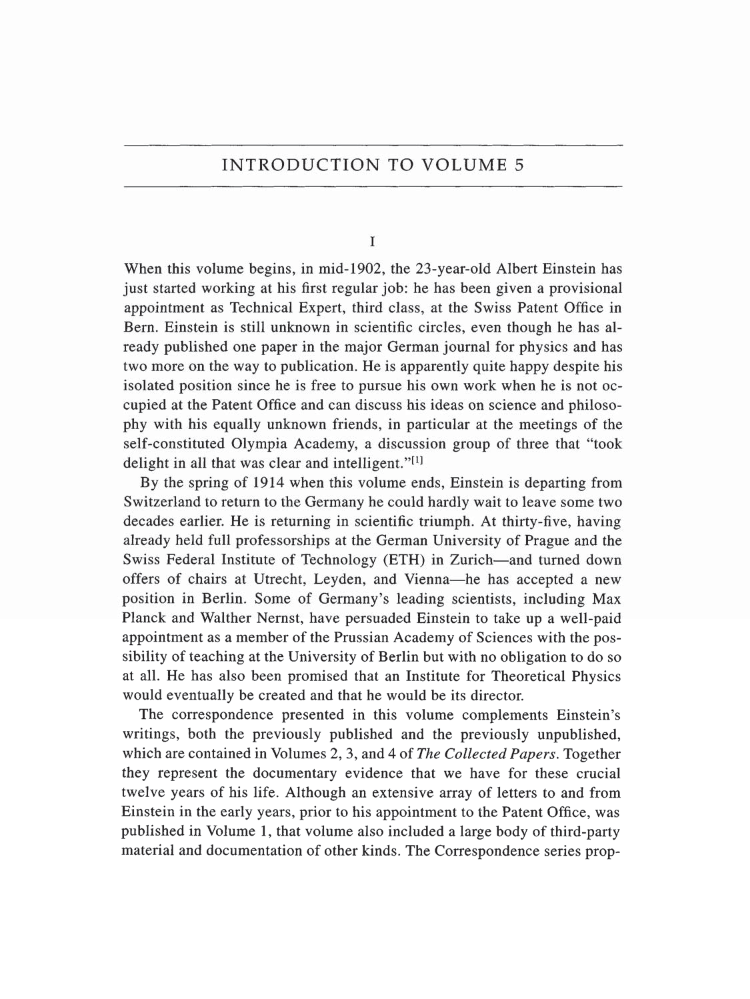INTRODUCTION TO VOLUME 5 I When this volume begins, in mid-1902, the 23-year-old Albert Einstein has just started working at his first regular job: he has been given a provisional appointment as Technical Expert, third class, at the Swiss Patent Office in Bern. Einstein is still unknown in scientific circles, even though he has al- ready published one paper in the major German journal for physics and has two more on the way to publication. He is apparently quite happy despite his isolated position since he is free to pursue his own work when he is not oc- cupied at the Patent Office and can discuss his ideas on science and philoso- phy with his equally unknown friends, in particular at the meetings of the self-constituted Olympia Academy, a discussion group of three that "took delight in all that was clear and intelligent."[1] By the spring of 1914 when this volume ends, Einstein is departing from Switzerland to return to the Germany he could hardly wait to leave some two decades earlier. He is returning in scientific triumph. At thirty-five, having already held full professorships at the German University of Prague and the Swiss Federal Institute of Technology (ETH) in Zurich-and turned down offers of chairs at Utrecht, Leyden, and Vienna-he has accepted a new position in Berlin. Some of Germany's leading scientists, including Max Planck and Walther Nernst, have persuaded Einstein to take up a well-paid appointment as a member of the Prussian Academy of Sciences with the pos- sibility of teaching at the University of Berlin but with no obligation to do so at all. He has also been promised that an Institute for Theoretical Physics would eventually be created and that he would be its director. The correspondence presented in this volume complements Einstein's writings, both the previously published and the previously unpublished, which are contained in Volumes 2, 3, and 4 of The Collected Papers, Together they represent the documentary evidence that we have for these crucial twelve years of his life. Although an extensive array of letters to and from Einstein in the early years, prior to his appointment to the Patent Office, was published in Volume 1, that volume also included a large body of third-party material and documentation of other kinds. The Correspondence series prop-
